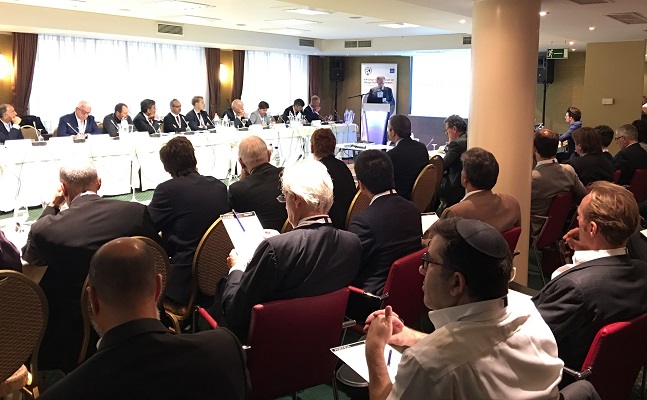Rough Diamond Valuation Forum Moves Closer to Defining Methodology
October 03, 16
(IDEX Online) – Kimberley Process (KP) Chair Ahmed Bin Sulayem called for a consensual approach to determining a set of criteria to create universal methodology for the valuation of rough diamonds at the second in a series of three Rough Diamond Valuation workshop-style forums held in Antwerp.
“Adopting the right methodology for a standardized approach to creating a process, which will serve all areas of the rough diamond industry, from large corporations to artisanal miners, is complex. What we’ve achieved so far, however, indicates a willingness on the part of all diamond industry professionals to embrace the concept of set of rough diamond valuation protocols”, said Bin Sulayem.
Industry experts addressed a range of issues which would have an impact on how a set of tools might be created leading to a valuation mechanism that could be used by all KP participants.
The topics covered included a statement on anti-trust legislation, using ‘Chatham House’ protocols which allows participants to speak freely in the knowledge that they will not be identified in any comments made. The forum looked at the challenges of creating rough diamond valuation structures from a producer's perspective and government diamond valuators as well as diamond tenders and auction experts joined the debate with insightful input about the rigors of the human element of valuing rough diamonds.
Existing methods vary from country to country with some using price books and lists based on valuators' individual categorization of rough diamonds using references to color, clarity, carat and cut.
The difference in value perspective, between large corporations and smaller artisanal miners, resounded clearly from the Diamond Development Initiative (DDI) representative, who outlined the fundamental needs of the smaller producers, whose requirement for immediate income often overshadowed their negotiating skills for fair market value. A recognized valuation mechanism, to determine real value, which could be applied to all operators, would be welcomed broadly by the DDI.
Stephane Fischler, President of the Antwerp World Diamond Centre, welcomed the opportunity created by Bin Sulayem to focus on a critical aspect supporting the mission of the KP and bringing the series of seminars to Antwerp.
“Ensuring a proper return on the export of diamonds, especially for the most challenged KP member countries, the alluvial producers, is key to the sustainability of our common efforts.
"The discussions have produced interesting avenues, all converging towards the need of building expertise and capacity whilst ensuring solid governance processes”, said Fischler.
The workshop identified a range of methods that could be adopted focusing in detail on reverse engineering based on the retail price of polished diamonds. Reverse engineering is a method where the valuator will base his decision on the forecast of polished output of the stone applying a certain percentage of fixed costs, generally 15 percent including polishing and certain margins, said a statement from the KP Chair.
Tenders and auction experts gave their opinion about price fluctuations and market forces as well as citing seasonal influences, all having an impact on final valuations.
Bin Sulayem summarized: “What came out of today’s forum was a clear message that what we’ve learned so far takes us much closer to achieving our objectives. There was consensus that individual governments should take a greater role by establishing regional offices - and creating training programs to enhance the skills of valuation experts. Also to come out of the meeting was the agreement to look into a standardized method of identifying a valuation starting point.”
Delegates at the forum agreed unanimously that moving forward with the results was vital for the future of diamond producing countries to better manage their resources, and to improve the living conditions of industry workers, especially those in the diamond producing nations of African.
Peter Meeus, Workshop Coordinator, concluded: “We have come very far in this second edition of the KP Chair’s Special Forum on rough diamond valuation and this is in merely four months. By the Plenary [meeting] we hope to identify a methodology that can be used in diamond offices around the world based on pre-formatted rough sorting protocols linked up with a reverse engineering platform based on real-time transactional prices. If we can still do that within this year we will have done what no one has done before.”
The third Rough Diamond Valuation Forum will be held to coincide with the Plenary meeting in Dubai in November this year.